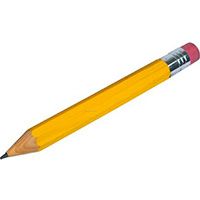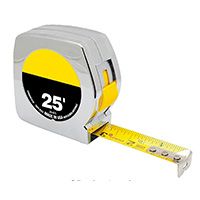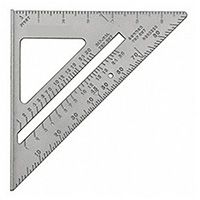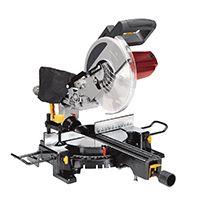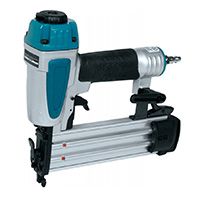Adding an entryway organizer to your home’s mudroom is an easy way to keep your keys, mail, coats, and other items you frequently use accessible. Homeowners can easily construct their own organizers with lumber, glue, and just a few other tools and materials. Learn how to build your own do-it-yourself entryway organizer in our step-by-step guide below so that you can be better prepared for those hectic mornings when you’re rushing to get out the door.
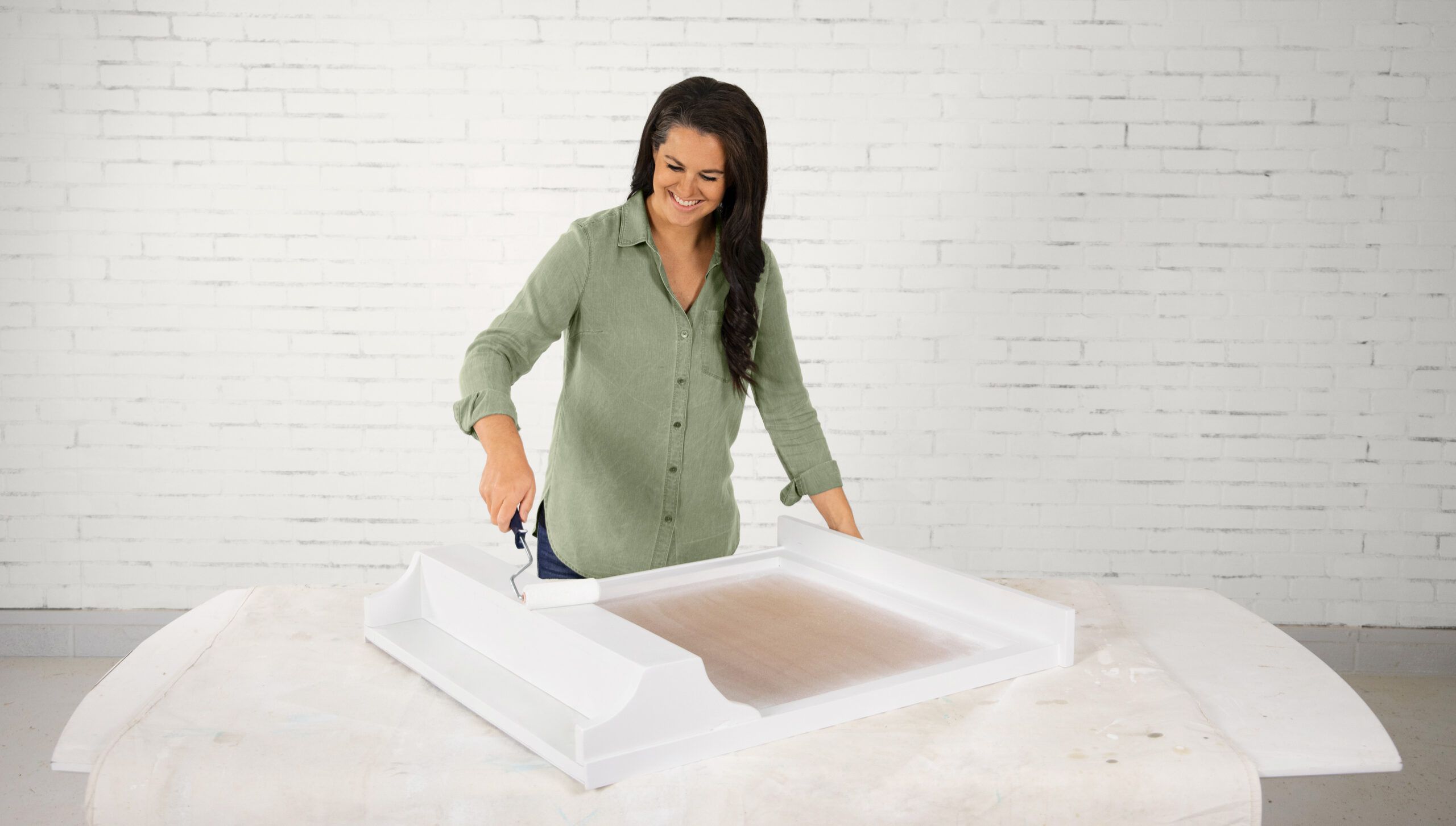
Materials and Tools Needed for an Entryway Organizer
Gather the materials below before you start your project:
- 1/8-inch-by-4-foot-by-8-foot hardboard panel
- 1/4-inch-by-1 1/4-inch lattice molding (6 feet long)
- 5/8-inch and 1 1/4-inch brad nails
- 1 1-by-4 pine board (8 feet long)
- 1 1-by-10 pine board (6 feet long)
- 2 1-by-2 pine boards (8 feet long)
- 3 double coat hooks
- 12-inch metal French cleat
- 12 3/4-inch No. 6 screws
- 20-inch-by-24-inch beveled-edge mirror
- 180-grit sandpaper
- Double-sided tape
- Mirror adhesive
- Spray primer and paint
- Three label holders
- Wood glue and wood filler
You’ll also need these tools:
- Brad nailer
- Circular saw
- Jigsaw
- Miter saw
- Pencil
- Rafter square
- Tape measure
Step-by-Step Instructions for Building an Entryway Organizer
Here’s how to construct your entryway organizer.
Step 1: Prepare the Frame
Follow the steps below to prepare your framework for assembly:
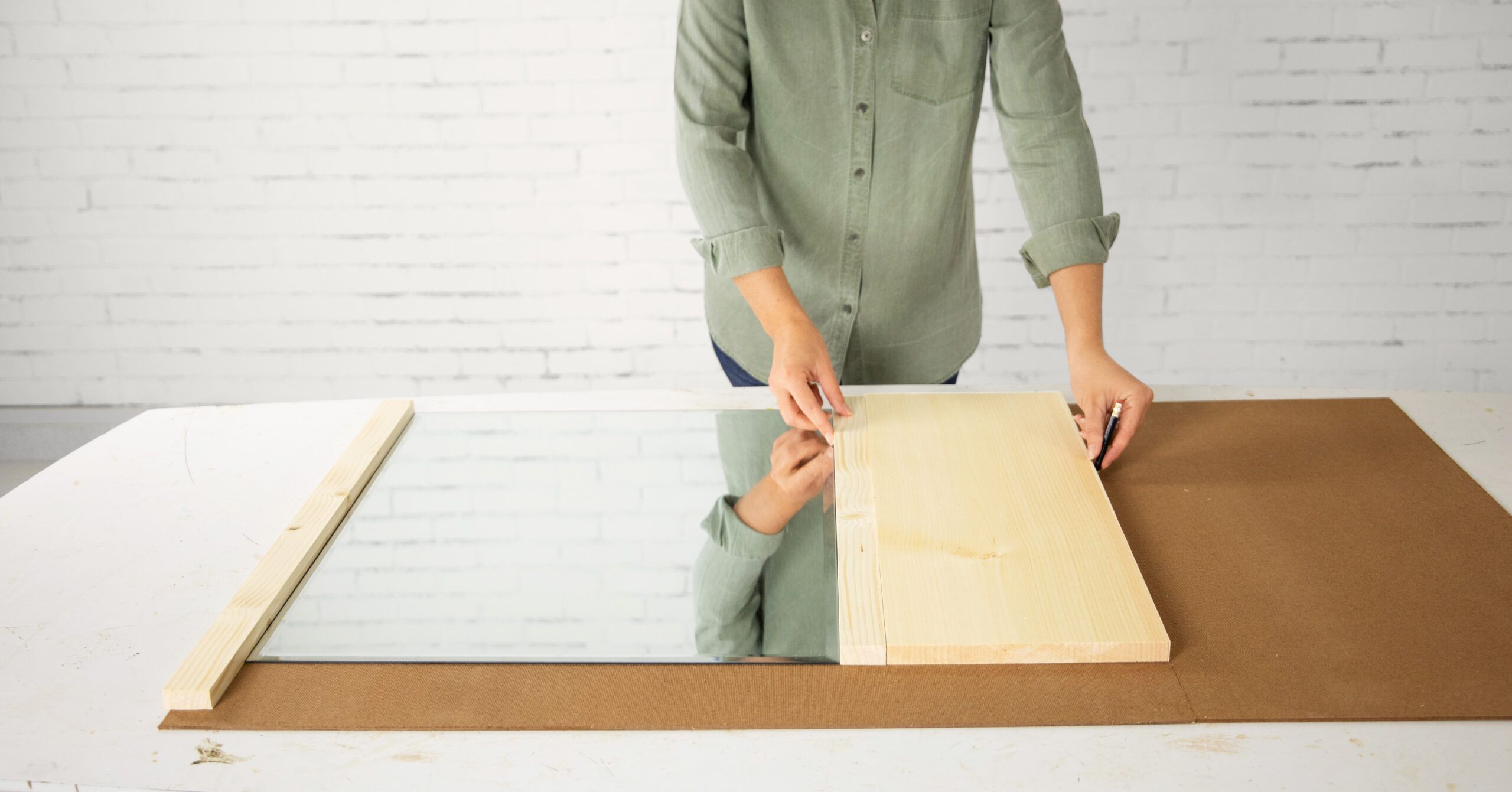
- Use a miter saw to cut the 1-by-10 board and a 1-by-2 board so that they match the mirror’s width.
- Place the mirror on the hardboard backer, then lay the cut 1-by-2 board and 1-by-10 board next to it.
- Cut another 1-by-2 board so that it’s longer than the first by the width of two 1-by-2 boards. Position it on the opposite edge of the mirror.
- Fit 1-by-2 boards against each side of the mirror.
- Mark around the frame, and cut the backer with a circular saw and guide.
Step 2: Assemble the Frame
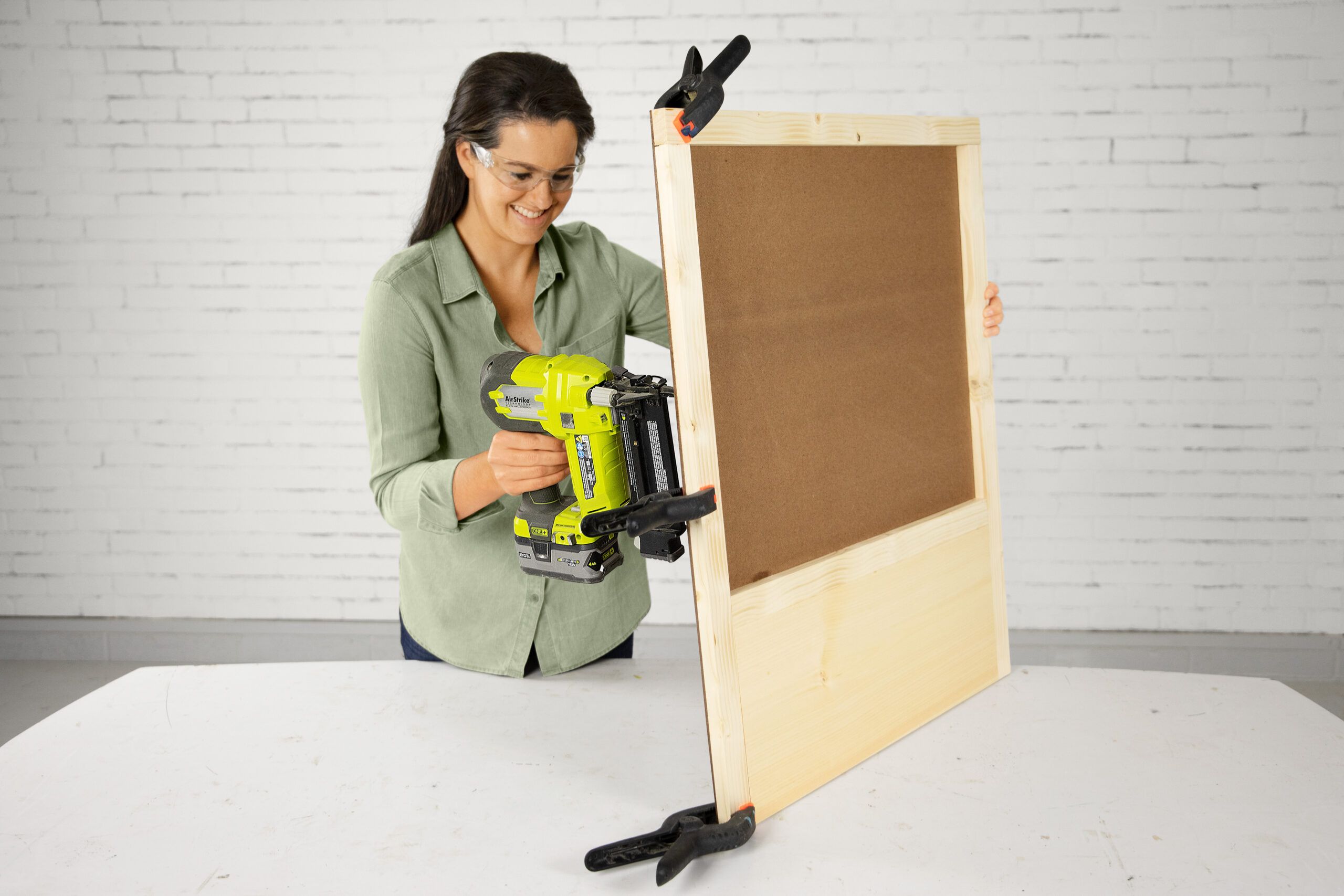
- Apply glue to the topmost 1-by-2 board and clamp it to the backer’s rough side. Make sure it’s flush with the edges.
- Tilt the assembly upright and secure it with 5 5/8-inch nails through the hardboard and into the 1-by-2 board.
- Repeat this process for the remaining pieces. Glue, clamp, and nail them into place.
- Drive 8 nails into the 1-by-10 board to complete the frame assembly.
Step 3: Cut the Cubby Brackets
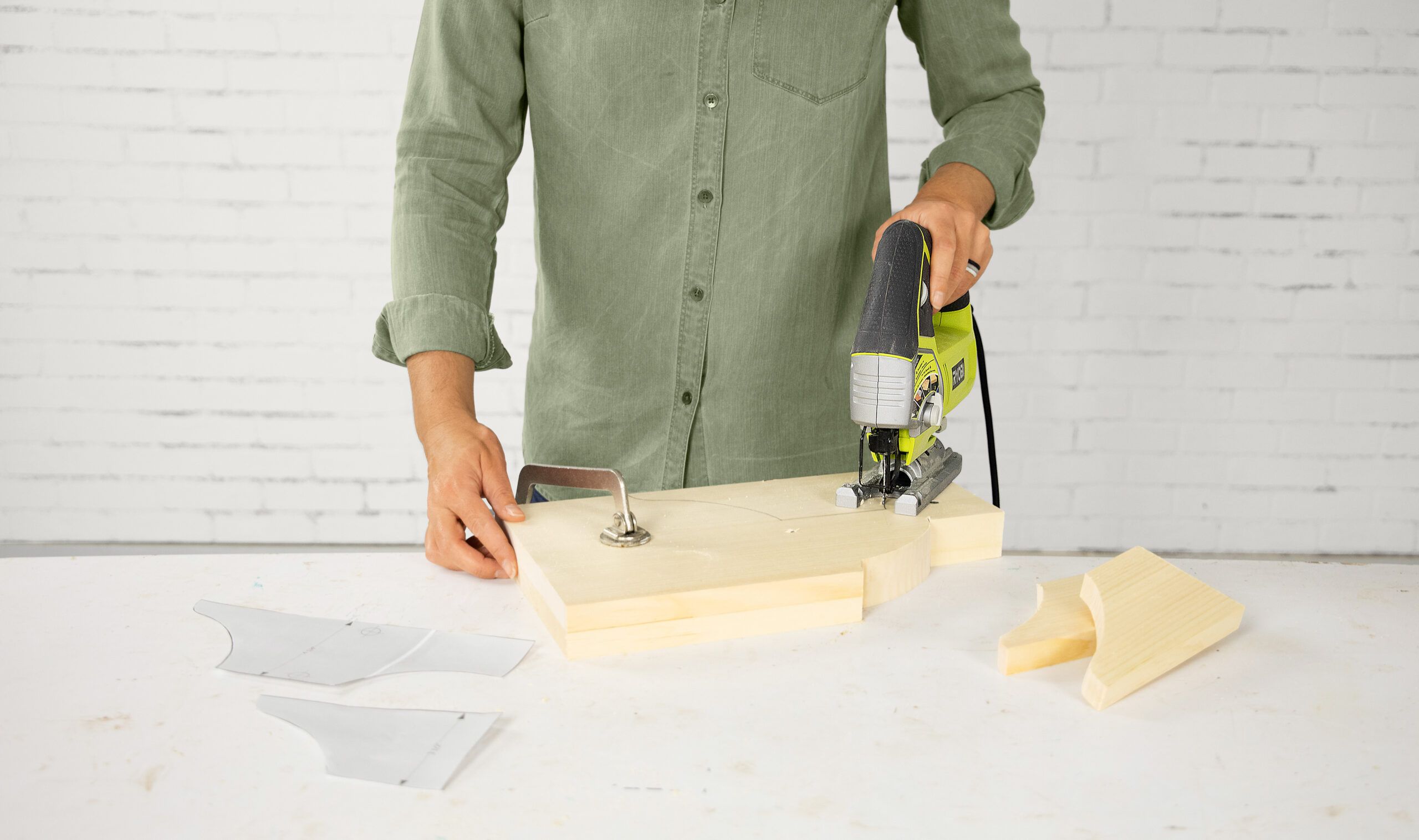
- Cut 2 10 3/4-inch-long sections from the 1-by-10 boards and temporarily screw them together.
- Find a template for cubbies, and align the template’s long sides with a 1-by-10 board’s edge. Follow the direction of the wood grain.
- Secure the templates with double-sided tape and trace the outlines onto the wood.
- Use a jigsaw to cut out the two inside and two outside brackets.
- Separate the pieces by unscrewing them.
Step 4: Assemble the Cubbies
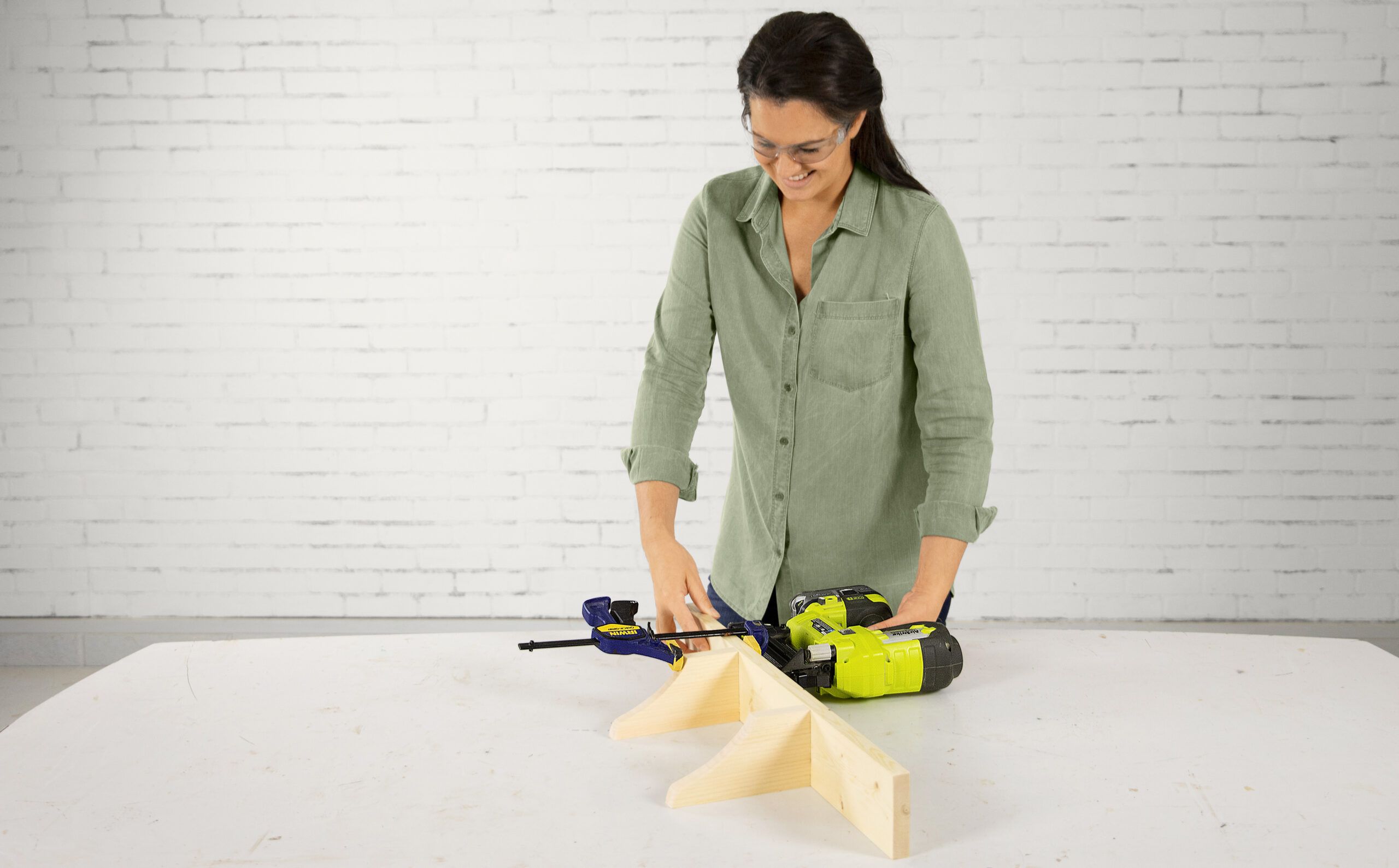
- Glue and nail the bottom edges of the divider brackets to the 1-by-4 board’s bottom using 1 1/4-inch brad nails.
- Attach the brackets’ front edges to the back face of the 1-by-4 board with glue and nails.
- Secure the side brackets to the ends of the cubby assembly.
- Glue the back edge of each bracket and the shelf bottom to the backer, then nail it to the brackets.
Step 5: Attach the Trim
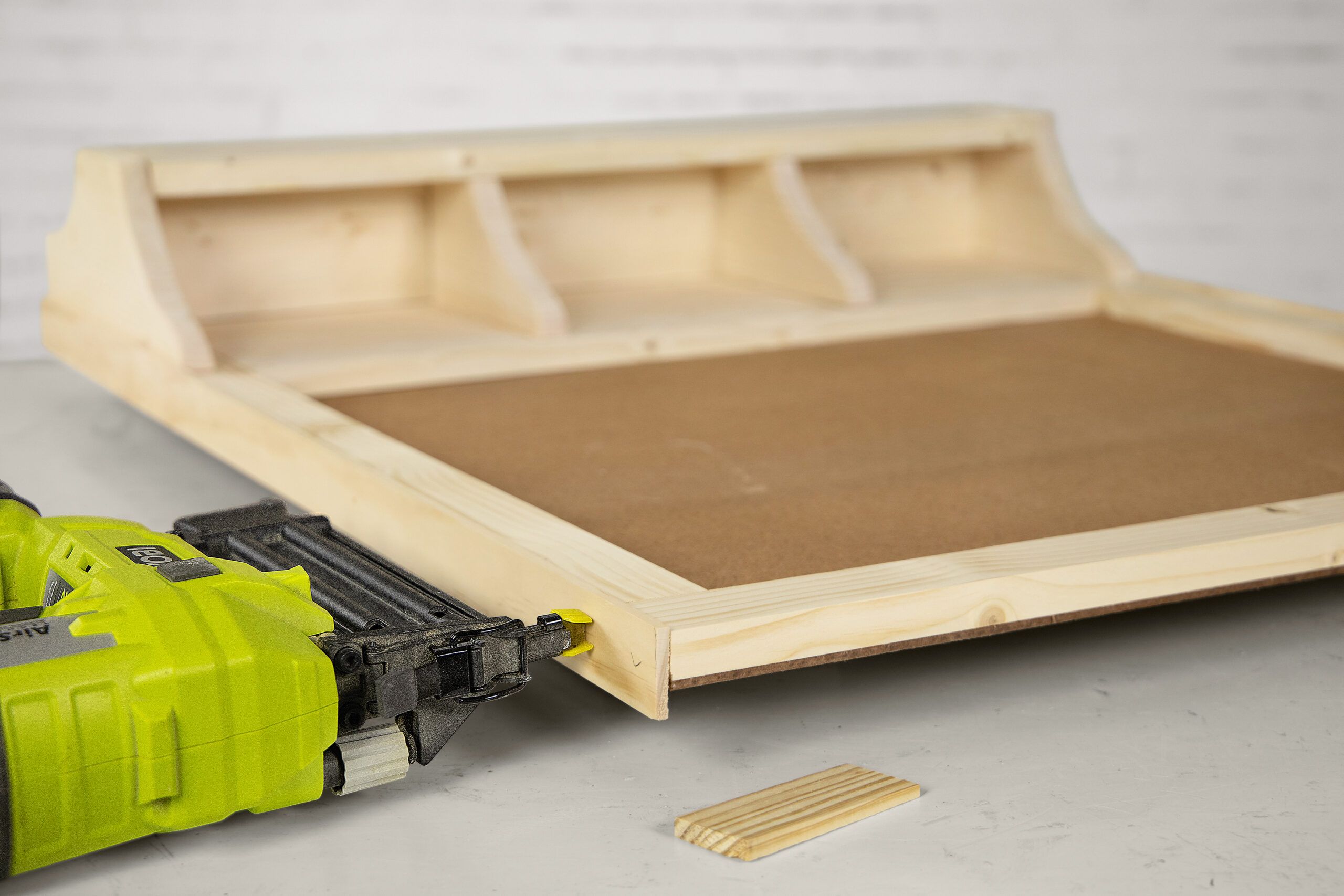
Add trim to your organizer for a polished look.
- Cut 2 lattice strips to cover the sides of the frame.
- With the frame face-up on two-by-four blocks, glue and nail the strips to the sides, and extend 1/4 inch past the backer.
- Attach the 1-by-4 board cap to the top of the frame, and align it with the back edges of the lattice strips.
- Fill all exposed nail holes with wood filler and sand them smooth once they’re dry.
Step 6: Paint and Add Hardware
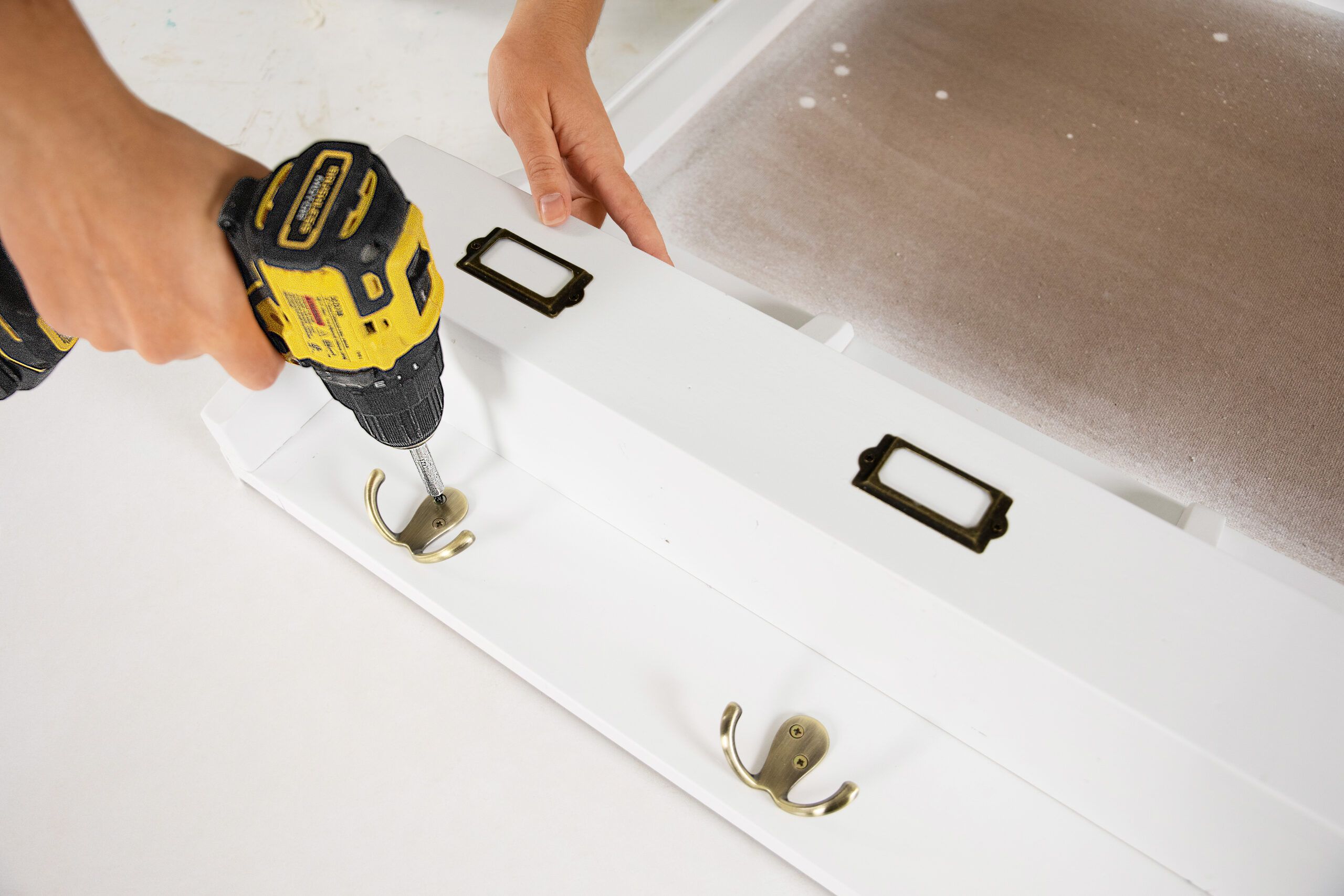
Complete your entryway organizer with these final steps:
- Use a spray can to apply a stain-blocking primer.
- Once it’s dry, brush or roll on two coats of the paint you’ve chosen.
- After the paint has dried, center and screw the label holders to the face of the cubbies.
- Position the hooks beneath the cubbies, mark and drill pilot holes, then fasten the hooks securely.
Step 7: Hang the Organizer
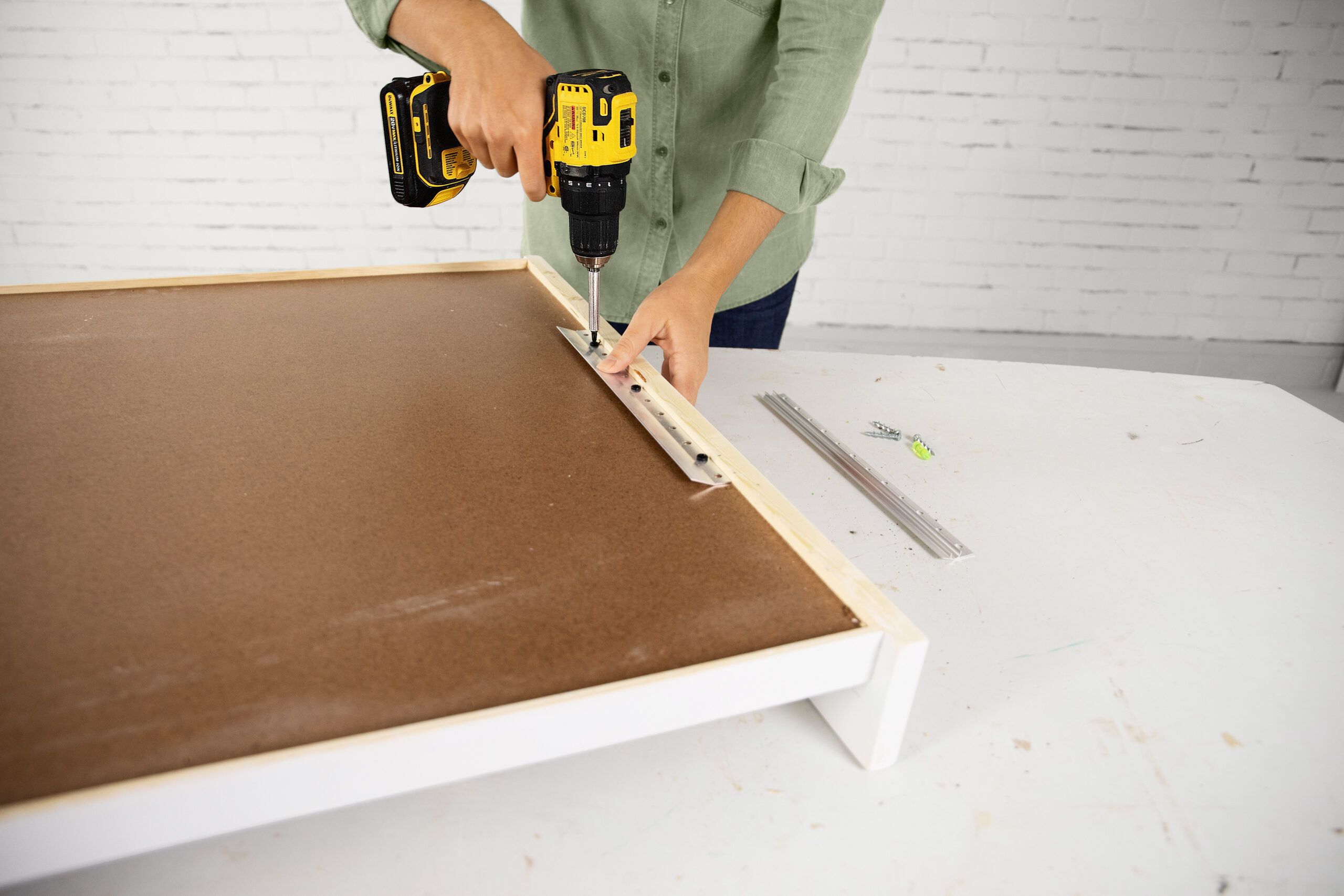
- Center the metal cleat under the cap’s back edge, and angle the lower leg away from the backer.
- Screw the cleat’s mate to a wall stud at the height you want. Angle its upper leg away from the wall.
- Level the cleat, mark and set two drywall anchors, then screw the cleat into place.
Properly hanging the organizer guarantees it stays secure and level, and prevents any accidents or damage.
Step 8: Glue the Mirror
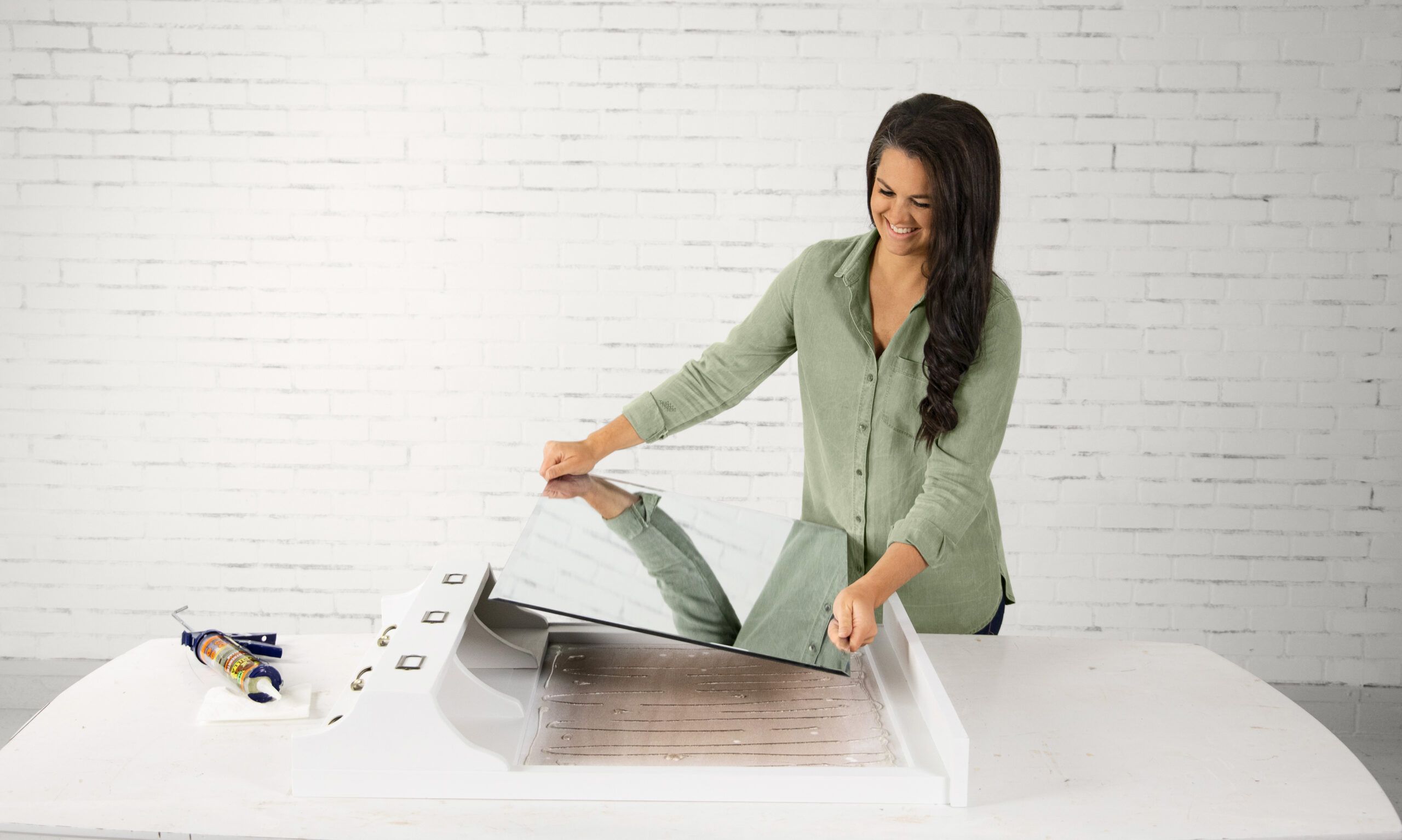
Attaching the mirror is the project’s final step. It enhances the visual appeal of your entryway organizer.
- Place the organizer on a worktable.
- Apply 1/8-inch strips of mirror adhesive a few inches apart on the exposed backer.
- Carefully lower the mirror onto the adhesive, and press it into place while maintaining a 1/8-inch gap on all sides.
- Allow 24 hours for the adhesive to cure before hanging the organizer on the wall cleat.
Additional Tips for a Successful Entryway Organizer Project
Achieving a professional-looking entryway organizer doesn’t have to be difficult. Consider the tips below, which will help you complete the project with ease.
- Consider Stain Over Paint: If you want to maintain a wood grain finish, stain your organizer instead of painting it. Stains can be more forgiving and provide a longer-lasting finish.
- Measure Twice, Cut Once: Accurate measurements are very important, so make sure you’re prepared.
- Plan Your Layout: Lay out all your pieces to make sure everything fits before you attach anything permanently.
- Use Quality Materials: High-quality materials will result in a sturdier and more durable organizer.
Maintain Your Entryway Organizer
Follow the tips below to keep your organizer in top shape.
- Inspect for Damage: Check for any signs of wear or damage, such as cracked wood or loose hooks. Address these issues immediately.
- Reapply Finish: If the paint or stain starts to wear off, lightly sand the affected areas and reapply the finish.
- Regular Cleaning: Dust and wipe down the organizer with a damp cloth regularly to keep it looking fresh.
- Tighten Screws: Screws can become loose over time. Periodically check and tighten them so that your structure remains stable.
